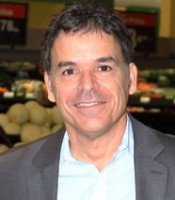Eurofins laboratories routinely test for the presence of the infectious bacterial generaSalmonella and Listeria monocytogenes in the food processing environment. While L. monocytogenes long has been known as an environmental contaminant, only recently Salmonella has been considered a persistent environmental contaminant.
At this year’s Food Safety Consortium (November 17-18, 2014, Schaumburg, IL), Dr. Douglas L. Marshall, Chief Scientific Officer – Microbiology, for Eurofins Scientific Inc. will present a workshop on Environmental Monitoring. This workshop will provide an overview of analytical methods used, a discussion of the zone approach to environmental monitoring, and a practical example of the use of microbial genetics in Eurofins’ Source Tracking Program to identify and eliminate a pathogen harborage.
In this Q&A with Dr. Marshall, we present a sneak-peek into what to expect in this workshop. Register today to learn more.
Food Safety Tech (FST):
How are environmental monitoring requirements changing under FSMA?
Dr. Marshall: The Food Safety Modernization Act passed by Congress contains language in SEC. 418. HAZARD ANALYSIS AND RISK-BASED PREVENTIVE CONTROLS stating: ‘‘(4) the preventive controls implemented under subsection (c) are effectively and significantly minimizing or preventing the occurrence of identified hazards, including through the use of environmental and product testing programs and other appropriate means” and ‘‘(C) An environmental monitoring program to verify the effectiveness of pathogen controls in processes where a food is exposed to a potential contaminant in the environment.”
The Preventive Controls for Human Food Proposed Rule has moved environmental testing to the appendix. It is clearly FDA’s intention that firms use environmental monitoring but how this will ultimately play out in the final rule is unknown. The companies we work with are finding a substantial non-regulatory push for environmental monitoring from their customers. As a result, firms without environmental monitoring programs will find it challenging to escape criticism from inspectors, auditors, and customers.
FST:
What are some broad topics you are going to be covering in your FSC presentation?
Dr. Marshall: This EMP workshop will deliver tips for an effective pathogen monitoring program. Highlights include information relevant to answering many EMP questions such as what to test for, what is the value of indicators; where to test, what methods to use, what test volumes are appropriate, how to use trending, and how to remediate an environmental problem.
FST:
What are some key challenges when companies do environmental monitoring? For Salmonella, and for Listeria?
Dr. Marshall: Many companies find it difficult to start an EMP program and fail to use the program in a proactive manner as an assessment tool. Environmental monitoring is an essential tool for microbial control, but it is not a control program. Robust programs target areas in a processing plant where environmental pathogen control is critical to product safety. The pathogen of concern may differ depending on food product type and processing conditions.
FST:
Why is it important for food companies to pay attention to this critical area of testing?
Dr. Marshall: Numerous recent high-profile foodborne disease outbreaks and large recalls have been traced to poor environmental controls. Lack of effective environmental monitoring by producing firms contributed to these events. As a result, inspectors, auditors, and customers are demanding the placement of environmental monitoring programs as an additional leg on the food safety control stool, adding to GMPs, SSOPs, and HACCP.
FST:
What kind of technologies will you be talking about in your presentation?
Dr. Marshall: The talk will present an overview of analytical tools required for routine monitoring and give an example of the use of genetic strain typing as a source-tracking tool for remediation.
Learn more, and register today for the Food Safety Consortium – Multiple Conferences, One Event, featuring 30 plus expert industry speakers, and speakers from FDA, CDC and USDA.
















